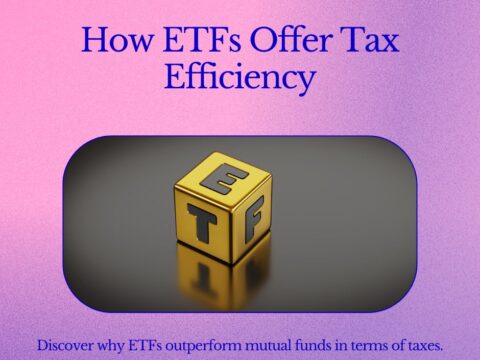Building a diversified investment portfolio is a key strategy for mitigating risks and maximizing returns, and Exchange-Traded Funds (ETFs) have emerged as a popular vehicle for achieving this goal. With their inherent diversification and flexibility, ETFs offer investors a dynamic and efficient way to gain exposure to a wide range of assets, sectors, and regions, thereby fostering a balanced investment approach that aligns with individual risk preferences and financial goals. In this comprehensive guide, we delve into the intricacies of building a diversified portfolio with ETFs, emphasizing the advantages, strategies, and best practices that empower investors to optimize their investment decisions, manage risks, and achieve long-term financial growth within the dynamic world of ETF investing and diversified asset management.
Understanding the Basics of ETFs and Diversification: Exploring the Foundations of a Balanced Investment Portfolio
Understanding the basics of ETFs and diversification involves exploring the foundations of a balanced investment portfolio, emphasizing the benefits of ETFs in fostering diversification, mitigating risks, and optimizing asset allocation strategies that align with individual risk preferences and long-term financial goals within the realm of diversified asset management and investment portfolio optimization. By understanding the basics of ETFs, investors can gain insights into their diversified nature, efficiency in tracking indices, and flexibility in building a balanced portfolio that spans across various asset classes, sectors, and regions within the interconnected world of ETF investing and diversified asset management strategies.
Strategies for Implementing Sector and Industry Diversification with ETFs: Maximizing Exposure to Dynamic Market Segments and Emerging Trends
Implementing sector and industry diversification strategies with ETFs involves maximizing exposure to dynamic market segments and emerging trends, fostering a dynamic investment approach that transcends traditional portfolio limitations and empowers investors to capitalize on sector-specific opportunities, industry advancements, and market trends within the realm of diversified asset management and ETF-based investment strategies. By implementing sector and industry diversification strategies, investors can optimize their asset allocation, capitalize on emerging market opportunities, and create a diversified portfolio that aligns with their investment objectives and long-term financial goals within the interconnected world of ETF investing and dynamic asset management practices.
Navigating Regional Diversification and International Exposure with Global ETFs: Seizing Opportunities in Foreign Markets and Economic Landscapes
Navigating regional diversification and international exposure with global ETFs involves seizing opportunities in foreign markets and exploring diverse economic landscapes, fostering a global investment perspective that transcends domestic market limitations and empowers investors to capitalize on international growth prospects, regional market fluctuations, and global economic trends within the realm of diversified asset management and global ETF-based investment strategies. By navigating regional diversification, investors can capitalize on global market opportunities, gain exposure to diverse economic landscapes, and build a diversified portfolio that spans across various regions, countries, and international market segments within the interconnected world of global ETF investing and dynamic asset management practices.
Balancing Risk and Return with Bond ETFs and Fixed-Income Diversification: Safeguarding Portfolios and Promoting Financial Stability
Balancing risk and return with bond ETFs and fixed-income diversification involves safeguarding portfolios and promoting financial stability by exploring the benefits of fixed-income securities, bond ETFs, and diversification strategies that prioritize risk management, income generation, and long-term financial stability within the realm of diversified asset management and fixed-income ETF-based investment strategies. By balancing risk and return, investors can safeguard their portfolios, generate stable income streams, and foster financial stability through a diversified investment approach that incorporates fixed-income securities and bond ETFs within the interconnected world of ETF investing and dynamic asset management practices.
The Future of ETFs and Diversified Asset Management: Innovations and Collaborative Initiatives for Global Integration and Investment Growth
Looking ahead, the future of ETFs and diversified asset management holds promising opportunities for continued innovations, collaborative initiatives, and the integration of global investment advancements that redefine the relationship between diversified asset allocation and long-term financial growth, fostering a future where ETFs serve as a dynamic and inclusive investment tool that transcends the limitations of traditional portfolio management and empowers investors to achieve their long-term financial goals on a global scale.




